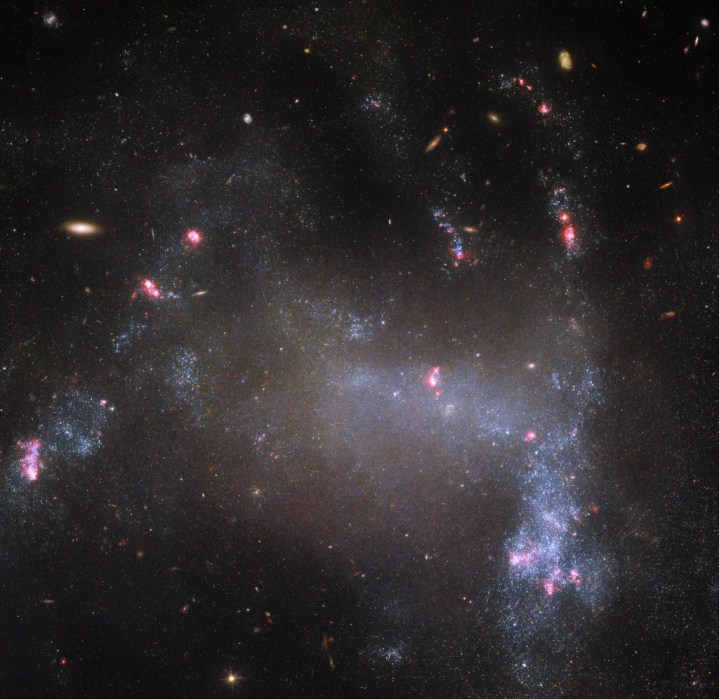This week’s image from the Hubble Space Telescope shows an irregular galaxy, the spindly arms and clawed shape of which has led to it being named the Spider Galaxy. Located 30 million light-years away, the galaxy also known as UGC 5829 is an irregular galaxy that lacks the clear, orderly arms seen in spiral galaxies like the Milky Way.

As it is diffuse and faint, this galaxy has not often been studied. It does have a similarly named partner galaxy, the Spiderweb Galaxy, or MRC 1138-262, which has been more extensively studied — including by Hubble. The Spiderweb Galaxy is located 300 times further from Earth than the Spider Galaxy, but has been a target for research looking into how smaller galaxies merge to create one larger galaxy.
As for the Spider Galaxy, this image is made up of data from two different research programs. “The data in this image come from two Hubble observing programs. The first used Hubble’s Advanced Camera for Surveys to look at relatively nearby galaxies in an effort to build color versus brightness diagrams of the stars in these galaxies. Each observation only took one Hubble orbit (about 95 minutes) but provided a valuable archival record of the types of stars in different galaxies and therefore different environments,” Hubble scientists explain in a statement.
“The second program used Hubble’s Wide Field Camera 3 to look at star clusters in dwarf galaxies. Their observations leveraged Hubble’s ultraviolet capabilities, along with its ability to see fine details, to better understand the environment where stars form in dwarf galaxies. The star-forming regions of UGC 5829 are readily visible in this image as bright-pink nebulae or clouds.”
While Hubble’s instruments operate primarily in the visible light range, which is the same range of wavelengths that can be seen by the human eye, they do also have the ability to look in some ultraviolet and infrared wavelengths. Using these different wavelengths allows scientists to observe features that would otherwise be hard to detect, as seen in this ultraviolet image of Jupiter taken by Hubble that shows off the planet’s great red spot.
You can get an idea of what the same object looks like at different wavelengths by comparing objects viewed by Hubble‘s visible light instruments with those viewed by the James Webb Space Telescope’s infrared instruments.
Editors’ Recommendations
Services Marketplace – Listings, Bookings & Reviews